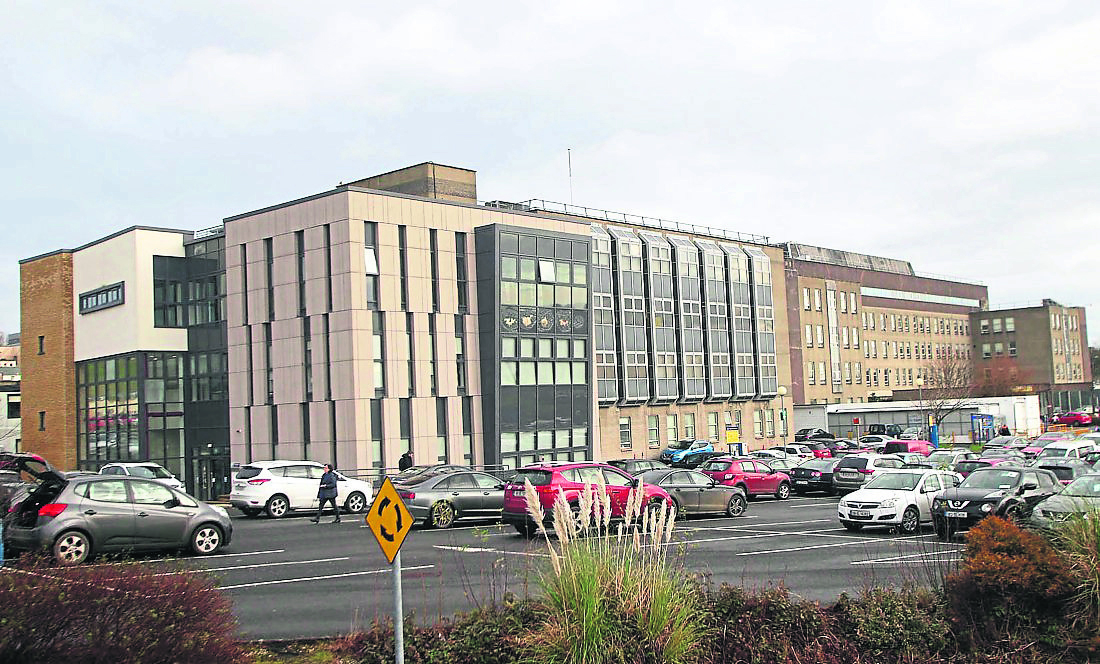By Louise Doyle
THE manager of Letterkenny University Hospital has said “significant progress” has been made to improve patient flow through the emergency department.
Mr Sean Murphy was speaking in response to the findings of an inspection report carried out by the health watchdog which found prolonged waiting times in the hospital’s emergency department.
The unannounced inspection was carried out by Health Information and Quality Authority (HIQA) on November 6 and 7, 2023.
Other areas assessed as part of the inspection were Surgical Ward 2 and Medical Ward 3.
The focus of the inspection was to monitor the hospital’s compliance with the National Standards for Safe Better Healthcare. It was also used to assess progress on implementation of the hospital’s compliance plan relating to an announced two-day HIQA inspection in 2022.
During this inspection, HIQA looked at 11 National Standards, of these, Letterkenny University Hospital was substantially compliant in four standards, partially compliant in six standards, and fully compliant in one standard.
In 2022, the overall attendance rate at the hospital’s emergency department was 52, 685, which equated to an average attendance of 4,390 each month of 142 attendances every day.
In 2023, year to date, the attendance was the second highest of all model 3 hospitals and a seven per cent increase on the same period in 2022, and a 19 per cent increase on the same timeframe in 2019 pre-pandemic.
Inspection report findings reveal that on the day of the inspection, the emergency department was busy with patients waiting on average up to six hours for medical assessment post triage.
At 11am, on the first day of inspection there were 64 patients in the emergency department, however, only two of these patients were admitted awaiting an inpatient bed. Of these 64 patients, 30 per cent had arrived via ambulance, 47 per cent had been referred by their GP and 23 per cent had self-referred. Fourteen of the 64 attendees were over 75 years of age (32 per cent).
The average waiting time from registration to triage at 11am was 36 minutes, which was not in line with the 15 minutes triage time recommended by the HSE’s emergency medicine programme and longer than that observed during the previous inspection.
The average time from triage to medical assessment was 400 minutes (6.6 hours). The average waiting time from medical assessment to admission was 418 minutes (6.9 hours).
Two patients who spoke with inspectors were in the ED for 17 and 19 hours respectively, one patient was admitted awaiting an inpatient bed and the other patient was awaiting diagnostics.
Inspectors found that the rate of admission to an inpatient ward for the emergency department over a 12-month timeframe was 36 per cent, which was higher than all hospitals inspected by HIQA.
Inspectors found that LUH had defined management arrangements in place to manage and oversee the delivery of care.
HIQA was satisfied that the hospital had defined lines of responsibility and accountability. There was evidence of strong clinical and nursing leadership in the emergency department.
Other findings included that hospital management were planning, organising and managing their nursing, medical and support staff in the hospital to support the provision of high-quality, safe healthcare.
But the report also found that the dignity, privacy and confidentiality of patients accommodated on corridors was compromised.
While an improvement to ambulance turnaround times at the hospital was also accepted by HIQA inspectors, they said that turnaround times still fell below the recommended timeframe.
In a statement issued afterwards, Mr Murphy said: “Significant progress has been made in a number of key areas since the previous HIQA inspection in 2022 including; increased staffing, enhanced governance, improved staff engagement and improved systems and processes to support patient flow through the emergency department.
“We are working hard to address the issues highlighted in this report and acknowledge the ongoing commitment of our staff who provide excellent person-centred care in our very busy hospital.”
Measures have been put in place to further enhance patient flow.
Mr Murphy said key outputs include increasing awareness among all clinical teams of discharge planning and home by 11, and implemented processes around delayed transfer of care, including communication with patients and family members.
In terms of staffing, six of seven Consultant Radiologists in LUH are on the Specialist Register for Radiology.
These posts have been filled on a medium term basis as an interim measure until recruitment for permanent posting has concluded.
Five consultants in emergency medicine currently hold permanent contracts, with five other consultants holding fixed term contracts.
Mr Murphy said LUH is “continuing in its efforts to recruit to fill all consultant posts with permanent candidates recruited through the Public Appointment Service which is the only avenue available for the permanent appointment of Consultant posts in public hospitals throughout the Republic of Ireland”.
Commending staff for their kindiness and compassion in treating patients, which is noted extensively throughout the report, Mr Murphy said: “With all our staff focused on improving the quality and safety of our services we will build on the good practice highlighted in this report.”










